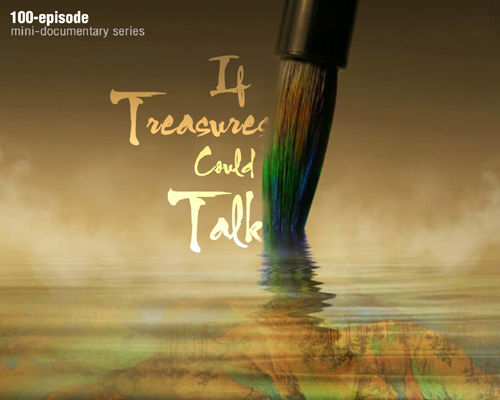
The official poster for "If Treasure Could Talk" series. (Photo/CCTV )
Pottery is the art of bringing clay to life. Thrown, kneaded, fired… Through a series of hardships, the clay is reborn as pottery, reincarnated in every possible shape.
Here, the clay is given life as a ding – a three-legged vessel.
This ding, in the form of an eagle, is among China's most unusual pieces of ancient pottery.
It's 6,000 years old, originating in the Neolithic Yangshao Culture.
Most of the painted pottery vessels produced by Yangshao Culture were for daily use.
The eagle-shaped ding is the only piece from that period that's in the shape of a bird.
What was its purpose?
Perhaps to store water, or grain?
Or perhaps it was used in sacrificial rites?
But why was it given the form of a bird?
Such questions add to the fascination about the ding. What it does tell us, is that 6,000 years ago Chinese people were capable of integrating practicality and design into their utensils.
Keke likes working with animal-shaped artifacts.
Her next replica will be the eagle-shaped ding - but 6,000 years later, she cannot get inside the potter's mind, and to breathe life into her replica, she must rely on pictures, as well as her own imagination, skill, and experience.
It's an example of how ancient Chinese design incorporated folk customs.
Despite the ancient regal air, the ding has a certain charm that appeals to modern tastes. From this perspective, it can be considered a special artistic link between China's ancient past and the present.
The ancient craftsmanship is exquisite. To take the ding in your hands, is to hold a mixture of 6,000-year-old soil and water from the source of Chinese civilization.
Making pottery requires perfect timing. If the clay gets too dry, it'll crack but get it too too wet and it'll collapse. An ideal piece of pottery needs patience. Drying, firing, cooling… Nothing can be rushed.
Today, we bemoan the fast pace of life. 6,000 years ago, our ancestors taught us how to navigate the constant battle against time.
If the ding could talk, it might tell us what it experienced 6,000 years ago - inside the kiln, and out.
Today, visitors to the National Museum of China can appreciate its exquisite craftsmanship and clever design, as well as its unique kind of robust charm.
You have more new messages waiting…


















































